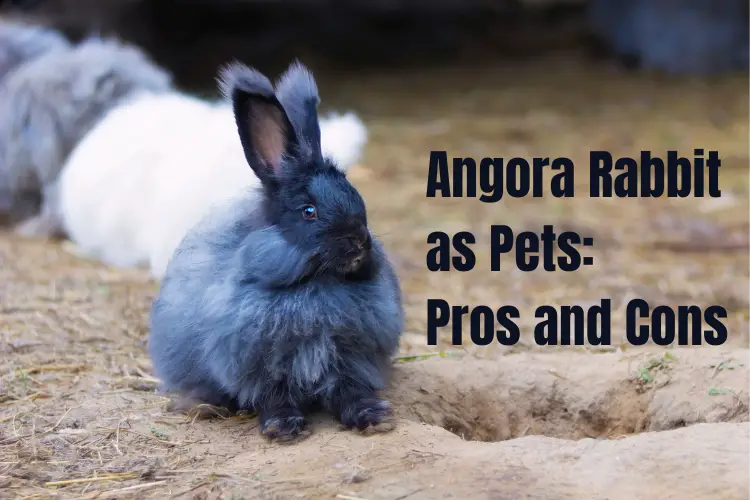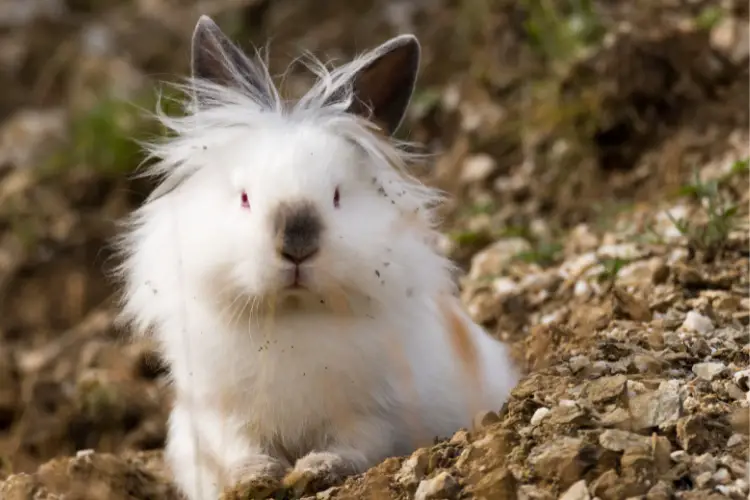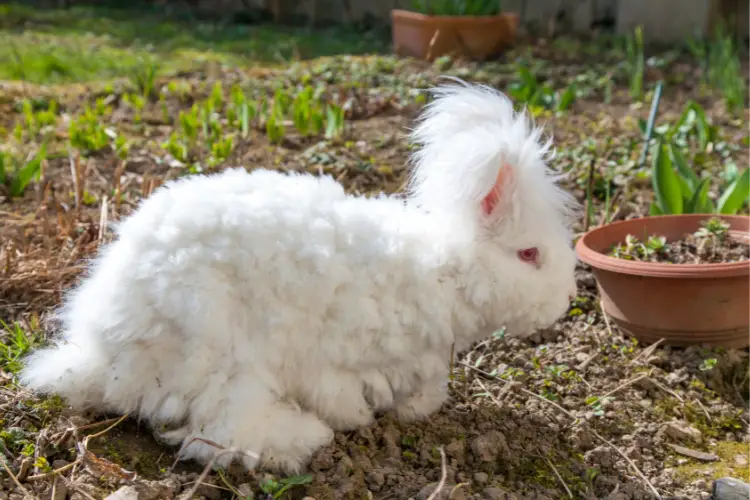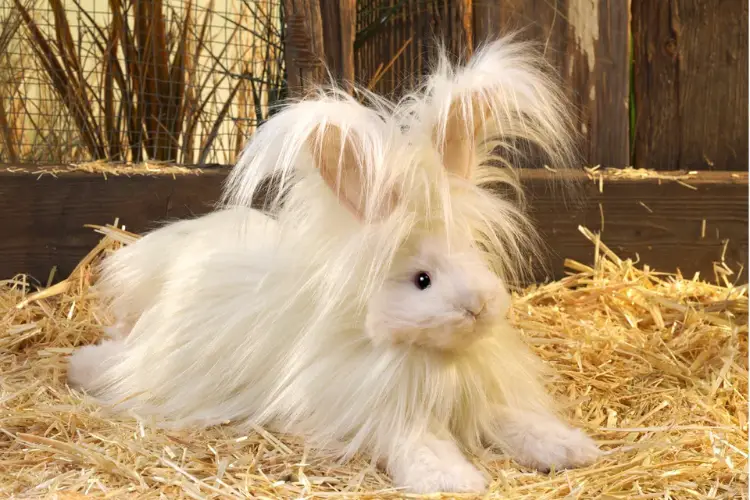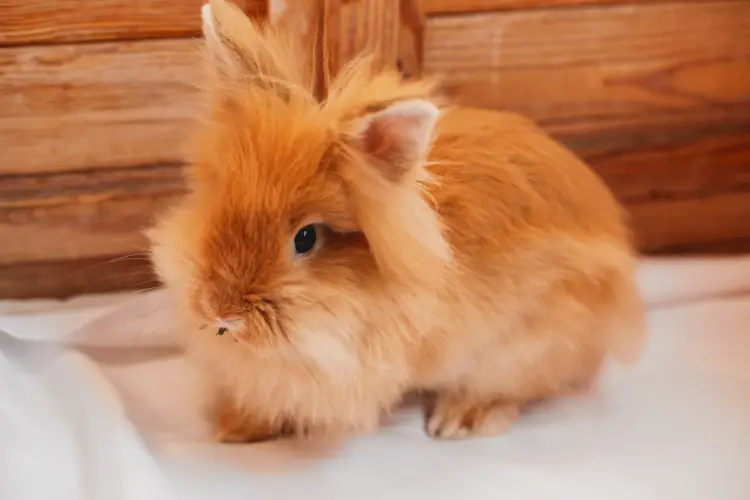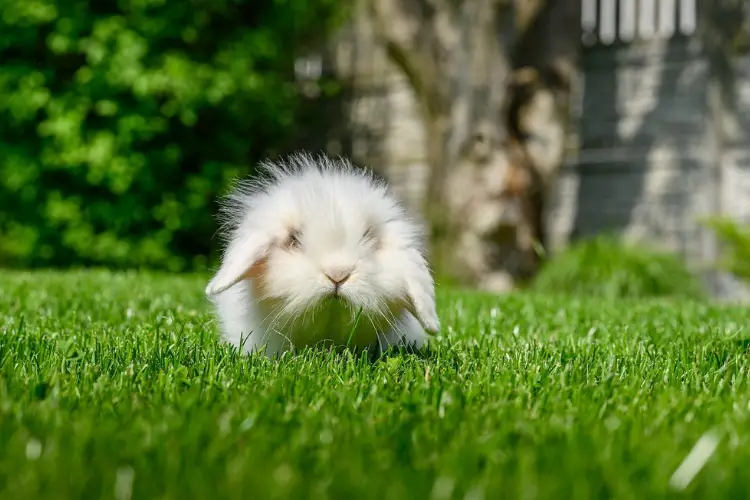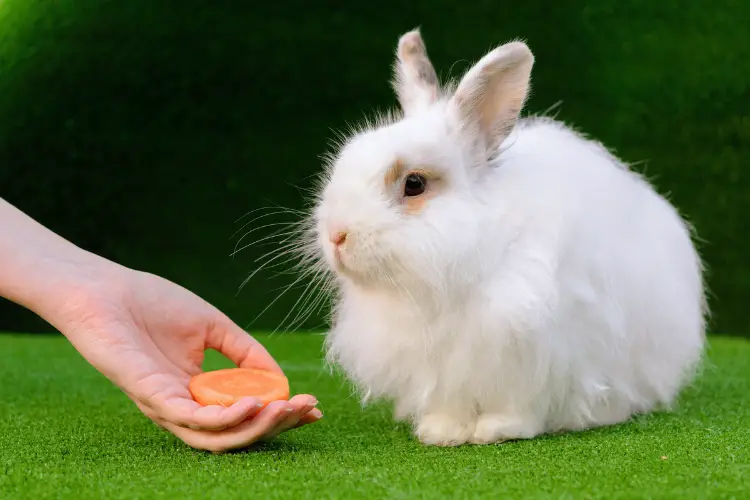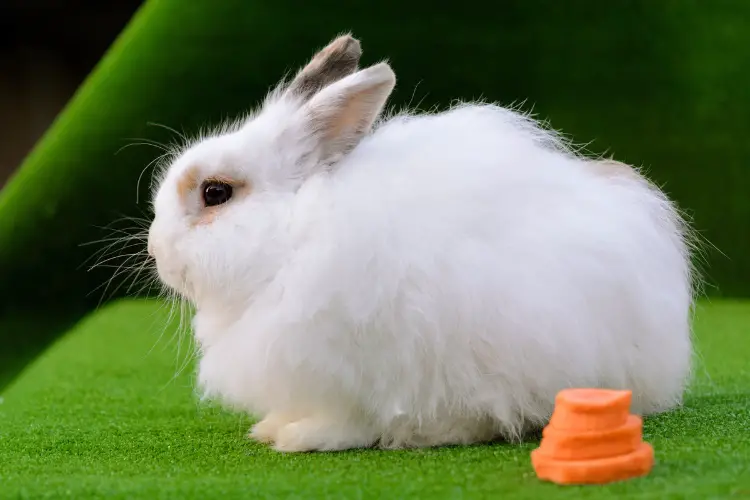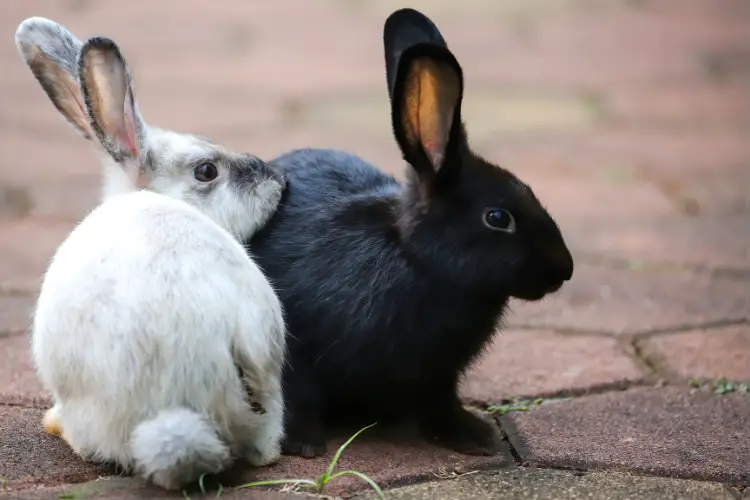Angora rabbits, with their soft, luxurious fur and friendly disposition, have become popular pets for many animal lovers. Known for their sociable nature and compatibility with children and seniors, they offer a unique combination of companionship and utility through their wool production.
However, potential owners must consider the full spectrum of responsibilities that come with adopting an Angora rabbit, including their health, grooming needs, and the ethical implications of their care.
In this blog post guide, we will have a look at the various aspects of keeping Angora rabbits as pets, highlighting the joys and challenges to help you make an informed decision.
Key Takeaways
- Angora rabbits are known for their gentle and sociable nature, making them suitable pets for families and seniors.
- They provide unique benefits through their wool, which can be used for crafting, though this also implies significant grooming needs.
- Owners must be aware of common health issues and ensure a diet and nutrition plan that supports the rabbit’s well-being.
- Practical considerations include adequate housing, understanding the costs of care, and the time commitment required for proper maintenance.
- Ethical considerations involve the fur industry’s impact on animal rights, the conservation status of domestic rabbits, and the importance of responsible breeding practices.
Understanding Angora Rabbits
Breed Characteristics
Angora rabbits are distinguished by their long, soft wool, which is their most defining characteristic. They are one of the oldest types of domestic rabbit, originating from Ankara, Turkey, and are renowned for their distinctive fluffy appearance.
The quality and quantity of their wool make them a popular choice among pet owners and fiber artists alike.
Angora rabbits come in a variety of breeds, each with its own unique features. The most common breeds include the English, French, Giant, and Satin Angora. Here’s a quick overview of their key traits:
- English Angora: Known for its full facial furnishings, which include ear tufts and a woolly mane.
- French Angora: Has a somewhat smoother coat and lacks the facial furnishings of the English variety.
- Giant Angora: The largest breed, it produces more wool than the other types.
- Satin Angora: Features a unique, satin-like sheen to its wool, making it highly sought after for its fiber.
Owners value Angora rabbits not only for their wool but also for their docile and friendly temperament, making them excellent companions. However, prospective owners should be aware that these rabbits require regular grooming to prevent matting and other issues associated with their abundant fur.
Historical Background
The history of the Angora rabbit intertwines with human civilization, particularly in Europe where the species has been a significant presence since the medieval period.
Recent research suggests that all European rabbits, including the ancestors of the Angora, share common genetic markers. These markers trace back to two maternal lines that diverged between 12,000 and 6.5 million years ago due to glacial isolation.
Documentation of the relationship between humans and European rabbits becomes more substantial in the 13th century. Official records from 1274 detail the capture of 2,000 rabbits annually on Lundy Island.
This indicates the growing importance of rabbits as a resource. Over time, rabbits became a staple in feasts and their domestication journey continued to evolve.
The table below outlines key historical milestones in the domestication of rabbits:
| Century | Event | Significance |
|---|---|---|
| 13th | Inquisition of Lundy Island | Indicates large-scale rabbit capture |
| 14th | Increased mentions in documents | Suggests rising importance as a food source |
While the Angora rabbit’s exact origin within this timeline is less clear, it is evident that the species has been shaped by human interaction for centuries, leading to the diverse and cherished pet we know today.
Physical Appearance and Varieties
Angora rabbits are renowned for their distinctive and luxurious wool, which sets them apart from other rabbit breeds. Their coats come in a variety of colors and patterns, ranging from pure white to shades of grey, brown, and black. The texture of their wool can vary from silky to fluffy, and they are available in both longhair and shorthair varieties.
The Angora rabbit’s physical appearance is not only defined by its coat but also by its body structure. They typically have a stocky body, round head with a broad face, and can exhibit a range of sizes depending on the specific breed. Below is a list of some common Angora rabbit varieties and their key characteristics:
- English Angora: Small to medium size, full coat, requires regular grooming.
- French Angora: Larger size, less wool on the face and ears, easier to groom.
- Giant Angora: The largest variety, requires significant grooming, produces the most wool.
- Satin Angora: Medium size, silky wool texture, produces a high-quality wool.
Each variety has its own grooming needs and personality traits, which potential owners should consider before making a commitment. The Angora rabbit’s charming appearance and the diversity among the breeds make them a popular choice for both pet owners and wool producers.
The Joys of Angora Rabbit Ownership
Social and Gentle Nature
Angora rabbits are renowned for their docile and calm temperament, which makes them excellent companions. They are known for their gentle nature, often sought after for both pet and therapy animal roles. This characteristic is particularly beneficial for families, as Angoras are typically very patient and tolerant with children.
Their social behavior extends to interactions with other pets as well. Angora rabbits can coexist peacefully with other household animals, provided they are introduced properly and monitored to ensure harmonious relationships.
It’s important for potential owners to understand that while Angoras are sociable, they also require quiet time and a safe space to retreat to. Here are some tips for fostering a positive environment for your Angora rabbit:
- Provide a comfortable and secure habitat.
- Introduce new pets or people gradually.
- Ensure regular, gentle handling to build trust.
- Create a routine that includes playtime and relaxation.
Compatibility with Children and Seniors
Angora rabbits are renowned for their docile and affectionate nature, making them excellent companions for both children and seniors. Their gentle temperament allows for a calming interaction, which can be particularly beneficial for the elderly or young ones seeking a pet with a softer demeanor.
Angora rabbits are not only adorable but also have a therapeutic presence. Their soft wool and serene disposition can provide comfort and reduce stress in individuals of all ages. However, it’s important to supervise interactions between children and rabbits to ensure the safety and well-being of both.
Here are some considerations when introducing an Angora rabbit to children and seniors:
- Ensure the rabbit is handled gently and taught to children as a living being that requires care and respect.
- Seniors can benefit from the rabbit’s presence as a companion animal, offering emotional support without the need for intense physical activity.
- Educate on the proper way to pick up and hold the rabbit to prevent injury to the animal or the handler.
- Regularly involve children in the care routine to teach responsibility and foster a bond between the pet and the child.
Wool Production and Crafting Benefits
Angora rabbits are renowned for their exquisite wool, which is a favorite among crafters and textile artists. The Angora yarn is not only soft and fluffy but also has excellent thermal properties, making it highly sought after for creating warm garments.
The versatility of Angora wool allows for a wide range of crafting possibilities, from knitting and crocheting to felting and weaving. For those who enjoy the art of spinning, Angora wool can be a joy to work with. It can be spun into yarn on its own or blended with other fibers to create unique textures and strengths.
The process of transforming this luxurious fiber into yarn can be both a relaxing hobby and a source of income, as handspun Angora yarn is a valuable commodity in the crafting market.
Here are some benefits of Angora wool production:
- Superior lustre and warmth retention properties
- Flexibility ideal for textile end-use products
- Potential for homesteading business by selling raw wool
- Community building through fiber arts clubs and groups
Health and Grooming Considerations
Common Health Issues
Angora rabbits are known for their soft, luxurious wool, but their health can be as delicate as their fur. Common health issues include dental disorders due to their continuously growing teeth, and gastrointestinal problems like constipation and diarrhea. These issues can often be prevented with proper care and diet.
Some health concerns are specific to the Angora breed, such as wool block, which is caused by the ingestion of their own hair during grooming. A list of frequent health problems includes:
- Dental Disorders
- Gastrointestinal Stasis
- Wool Block
- Ear Infections
- Uroliths (Bladder Stones)
It’s crucial for owners to monitor their pets for signs of illness and seek veterinary care promptly. A balanced diet, regular grooming, and a clean living environment are key to preventing many of these conditions.
Grooming Needs and Techniques
Angora rabbits are renowned for their luxurious wool, which requires regular and meticulous grooming. Proper grooming is essential to prevent the wool from matting and felting, which can lead to discomfort and health issues for the rabbit.
Unlike short-coated breeds such as the Mini Rex or Polish, which may be groomed once a week, Angora rabbits need daily attention to maintain their coat’s condition.
The grooming process involves several steps to ensure the rabbit’s comfort and the quality of the wool. A wide-toothed comb and a slicker brush are fundamental tools in an Angora owner’s grooming kit. Here’s a basic routine to follow:
- Begin with a wide-toothed comb to gently detangle the wool.
- Use a slicker brush to remove loose fibers and prevent matting.
- Check for any signs of skin irritation or parasites during grooming.
- Trim nails regularly to prevent overgrowth and injury.
Remember, while grooming is a time to bond with your rabbit, it’s also an opportunity to monitor their health. Look for any changes in the wool or skin that may indicate a need for veterinary attention.
Diet and Nutrition
Proper nutrition is crucial for the health and well-being of Angora rabbits. A balanced diet is essential, consisting primarily of unlimited hay, which provides the necessary fiber for their digestive system. Fresh greens should be included daily to supply vitamins and minerals, while a small number of pellets can offer additional nutrients.
The following list outlines the basic dietary components for an Angora rabbit:
- Unlimited hay (e.g., Timothy, Orchard grass)
- Fresh greens (e.g., romaine lettuce, parsley, cilantro)
- A few pellets (high in fiber, low in protein)
It’s important to avoid overfeeding pellets as they are dense in calories and can lead to obesity. Instead, focus on providing a variety of greens and hay to maintain a healthy weight and prevent gastrointestinal issues. Always ensure fresh water is available to aid in hydration and digestion.
Practical Aspects of Keeping Angora Rabbits
Housing and Space Requirements
When considering bringing an Angora rabbit into your home, it’s crucial to understand their specific housing needs. Unlike some pets that may adapt to smaller living spaces, Angora rabbits require a habitat that allows them to move freely and comfortably.
Adequate shelter is essential, not only to protect them from the elements but also to provide a sense of security and well-being. Angora rabbits thrive in environments that mimic their natural habitat. They need space to hop, play, and explore.
A common setup includes a spacious cage or hutch for sleeping and resting, along with a larger, secure area where they can exercise. It’s important to ensure that the exercise area is safe from predators and has a variety of enrichments like tunnels, hideouts, and toys to stimulate their curious nature.
Cost considerations are also a part of planning for your rabbit’s housing. Below is a list of potential expenses related to housing and space requirements:
- Cage or hutch
- Exercise pen or secure outdoor area
- Bedding materials
- Enrichment items (toys, tunnels, etc.)
- Maintenance and cleaning supplies
Remember, an Angora rabbit is not a suitable pet for a first-time animal owner due to the specific requirements of an Angora. They need grooming at least twice a month, which is a critical part of their care routine.
Cost of Care
The cost of caring for an Angora rabbit can vary depending on several factors, including the initial purchase price, ongoing expenses for feed and healthcare, and the cost of grooming supplies.
Initial costs can be significant, especially if purchasing a pedigreed rabbit from a reputable breeder. Ongoing expenses for feed, such as hay and pellets, as well as routine veterinary care, can add up over time.
To help prospective owners understand the potential costs, here is a list of common care supplies and their associated costs:
- Food and water dishes: $10 – $15
- Hay: $20 – $30
- Pellets: $10 – $20
- Litter: $10 – $20
- Grooming tools: $50 – …
It’s also important to consider the potential need for pet insurance, which can help mitigate unexpected veterinary expenses. Plans vary in coverage and cost, so it’s advisable to compare options to find the best fit for your budget and your rabbit’s needs.
Time Commitment for Owners
Owning an Angora rabbit requires a significant investment of time, which is essential for their well-being. Daily interaction and grooming are crucial to maintain the health and happiness of your pet. Angoras are known for their thick wool, which necessitates regular grooming to prevent matting and other issues.
Italics are not just for style; they emphasize the importance of consistent care. Here’s a basic weekly time breakdown for Angora rabbit care:
- Grooming: 2-3 hours
- Playtime and socialization: 7-14 hours
- Cleaning: 1-2 hours
- Health checks and maintenance: 0.5-1 hour
Remember, these are just estimates and your rabbit may require more or less time depending on its individual needs. It’s also important to note that Angora rabbits are a long-term commitment, with a lifespan that can extend up to 12 years. Prospective owners should be prepared for the duration of care this entails.
Ethical and Conservation Concerns
The Fur Industry and Animal Rights
The ethical considerations surrounding the fur industry are complex and multifaceted. Angora rabbits, known for their long, soft fur, are often at the center of this debate.
The fur of these rabbits is highly valued for its quality and is used in various products, from luxurious garments to crafting materials. However, the methods used to harvest this fur have raised significant animal rights concerns.
The process of obtaining Angora fur can involve practices that are distressing and harmful to the rabbits. In contrast, faux fur offers an alternative that avoids animal suffering, but it also comes with environmental considerations.
The table below outlines the key differences between Angora and faux fur in terms of animal welfare and environmental impact:
| Fur Type | Animal Welfare | Environmental Impact |
|---|---|---|
| Angora | Often involves painful procedures | Renewable resource |
| Faux Fur | No direct animal harm | Potential pollution |
It is important for consumers to be aware of these issues when making purchasing decisions. The choice between real and faux fur is not just a matter of personal preference, but also one of ethical responsibility and environmental sustainability.
Conservation Status of Domestic Rabbits
While domestic rabbits are not considered endangered as a species, certain breeds and populations face conservation challenges. The International Union for Conservation of Nature (IUCN) considers some wild rabbit species to be critically endangered.
This status is a stark reminder of the fragility of wildlife and the impact of human activities on ecosystems. Domesticated rabbits, on the other hand, have been bred in a variety of sizes and colors for different purposes, including as pets.
The European rabbit, from which most domestic breeds originate, has been domesticated since ancient Rome. However, the conservation status of domestic rabbits is not uniform, and some heritage breeds are at risk of disappearing due to changes in agricultural practices and the pet industry.
It is essential to promote responsible breeding practices and maintain genetic diversity within rabbit populations to ensure their long-term survival. Conservation efforts for domestic rabbits often focus on preserving heritage breeds and preventing the loss of genetic traits that are unique to these animals.
Responsible Breeding Practices
Responsible breeding of Angora rabbits is not just about pairing two rabbits; it involves a deep understanding of genetics, health, and welfare.
Ensuring the well-being of both the parents and the offspring is paramount. Breeders must be knowledgeable about the genetic predispositions of their rabbits to prevent hereditary diseases.
A responsible breeder will also consider the temperament and physical health of the rabbits before breeding. This includes regular health checks and avoiding inbreeding, which can lead to a plethora of health issues. The goal is to produce healthy, well-adjusted rabbits that can enjoy a high quality of life.
Here are some key points to remember for responsible breeding:
- Health screening for hereditary diseases
- Understanding of rabbit genetics and behavior
- Avoiding overbreeding and inbreeding
- Providing proper care for pregnant does and their kits
- Ensuring good homes for all offspring
Conclusion
In summary, Angora rabbits present a delightful option for those seeking a pet with a gentle nature and sociability. Their thick, soft fur not only contributes to their adorable appearance but also offers a unique aspect of pet ownership through the potential for hand-spinning yarn.
However, prospective owners should consider the responsibilities that come with their care, including regular grooming to maintain their coat and attention to their health needs. While they may require more maintenance than some other pets, the companionship and joy that an Angora rabbit can bring to a family or individual are undeniable.
Whether you are drawn to their playful energy or their elegant presence, an Angora rabbit can be a loving addition to your home, offering both the rewards of pet ownership and the satisfaction of contributing to the conservation of a domesticated breed with a rich history.
FAQs:
Which type of rabbit is best for a pet?
The Angora rabbit is known for its fluffy, thick coat of soft hair and is a medium-sized rabbit weighing around 2-3kg. They are perfect as pets due to their gentle nature and sociability, typically coming in white, grey, and gold colors.
Are two rabbits easier to manage than one?
Having two rabbits can be beneficial as rabbits are social animals and enjoy companionship. However, it is important to ensure they are properly introduced and compatible.
What are the main uses of rabbits in production industries?
Rabbits are used for their meat, wool, fur, and pelts, as well as for their nitrogen-rich manure and high-protein milk. Breeds like the Angora rabbit have been developed for their long, soft fur, which is often spun into yarn.
What are some common health issues in Angora rabbits?
Angora rabbits can be prone to wool block due to their long fur, as well as dental problems, ear mites, and gastrointestinal stasis. Regular health checks and grooming are essential.
What is the conservation status of domestic rabbits, like the Angora?
Domestic rabbits, including the Angora, are not considered endangered as they are widely bred both as pets and for commercial purposes. However, ethical breeding practices are important to maintain their welfare.
How does the fur industry impact rabbits like the Angora?
The fur industry has been controversial due to animal welfare concerns. Angora rabbits are bred for their fur, which can be harvested humanely, but there is a movement towards more ethical practices and alternatives to fur.

